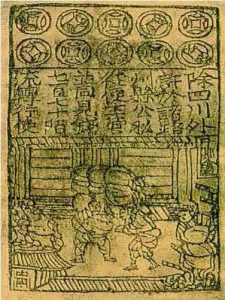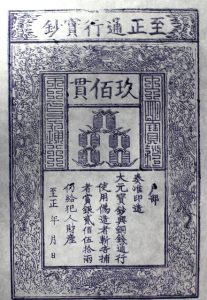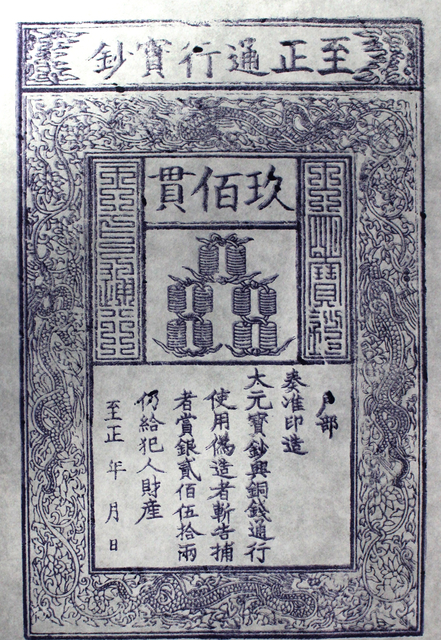Earlist Paper Currency in Song Dynasty
Jiaozi(交子)

- Appeared in around 11th century in Sichuan, Northern Song Dynasty
- “Jiao” meas “duplex printing”
- First issued by private merchant enterprise, used as banknotes
— Cash Coins (Iron) were too heavy to carry
- Emperor Renzong nationalised and managed the production of Jiaozi and founded the “Jiaozi wu “(交子務)
— Military expenditure & Counterfeit Jiaozi
— Standard denomination: from 1 guàn (貫, or 700 wén) to 1 mín (緡, or 1000 wén)
— Expiration date of 2 to 3 years
- Unlimited printing led to inflation and devaluation during years of Emperor Zhezong
- Emperor Huizong replaced Jiaozi with Qianying, which is another form of banknote
Qianyin(钱引)
Huizi (会子)
—Lack mintage material Copper
- First printed in sub-Hangzhou and sub-Chengdu area
- Half copper coin& Half Huizi(paper currency)
- Emperor Xiaozong added sub-Nanjing and sub-Wuhan area and used as paper currency
— Military expenditure & Lack of copper
— Standard denomination : Almost same as Northern Song
— Expiration date of 3 to 4 years
— Huizi became major currency during Southern Song dynasty
- Emperor Lizong abolished expiration date , causing devaluation of Huizi
- Hyper inflation in anti-Mogol war
- Yuan government replaced Huizi with “Jiaochao”(交钞)
- Yuan, Ming and Qing Dynasty issued paper currency in large scale



